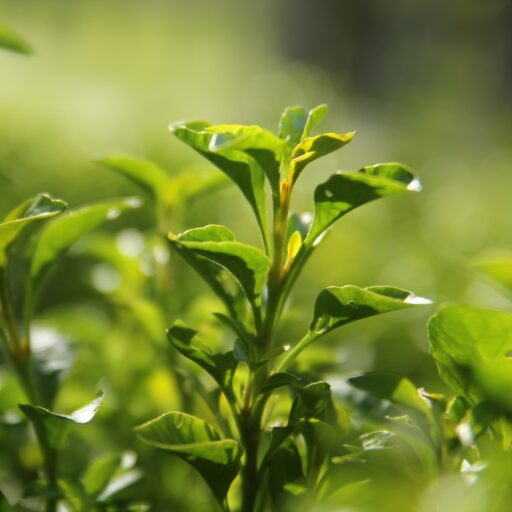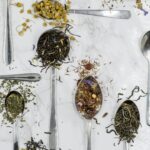Support our educational content for free when you purchase through links on our site. Learn more
What Climate is Best for Growing Tea? Discover 10 Essential Factors for Perfect Brew! [2024] 🌱
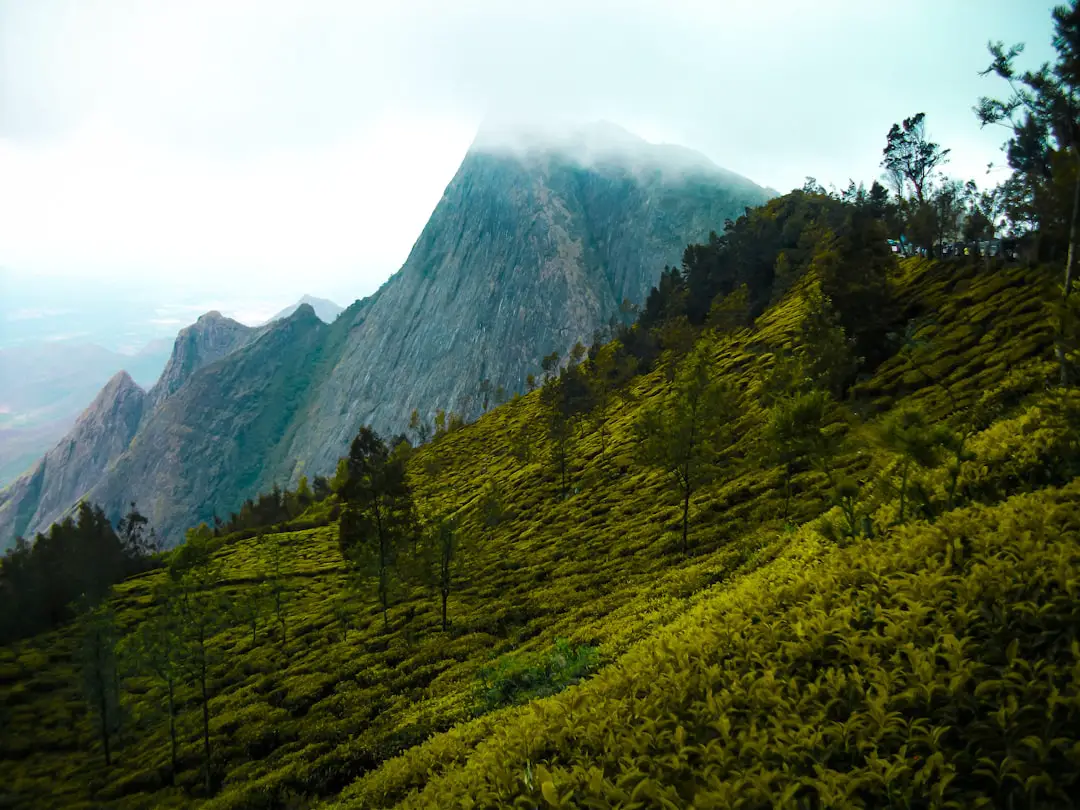
Have you ever sipped a cup of tea and wondered what goes into creating that perfect brew? Picture this: a lush green landscape, misty mountains, and the gentle rustle of tea leaves in the breeze. The secret to that delightful flavor lies not just in the leaves but also in the climate they thrive in! 🌍
In this article, we’ll take you on a journey through the ideal conditions for growing tea, exploring everything from temperature and rainfall to soil types and altitude. You’ll discover how these factors influence the taste of your favorite teas, whether it’s a delicate Darjeeling or a robust Assam. Plus, we’ll share some innovative techniques tea growers are using to adapt to changing climates. So, grab your favorite teacup and let’s dive into the world of tea cultivation!
Key Takeaways
- Temperature Matters: Tea thrives in a range of 10°C to 30°C (50°F to 86°F).
- Rainfall is Key: A minimum of 100 cm (40 inches) of annual rainfall is essential for healthy tea plants.
- Soil Quality: Well-drained, slightly acidic soil (pH 4.5-6.5) is crucial for flavor development.
- Altitude Effects Flavor: Higher elevations often yield more complex flavors due to slower leaf growth.
- Sustainable Practices: Emphasis on sustainable farming is growing, with certifications like Fair Trade and Organic.
If you’re inspired to start your own tea garden or simply want to explore the best tools for tea cultivation, CHECK OUT our recommended products:
- 👉 Shop Tea Growing Supplies on:
- Amazon: Tea Cultivation Essentials
- Walmart: Gardening Tools for Tea
- Etsy: Handcrafted Tea Accessories
Ready to brew the perfect cup? Let’s get started! 🍵✨
Table of Contents
- Quick Tips and Facts About Tea Growing Climate
- The Ideal Climate for Growing Tea: What You Need to Know
- Understanding the Tea Plant: Camellia sinensis and Its Preferences
- From Seed to Sip: The Journey of Tea Cultivation
- Harvesting Tea: Timing and Techniques for the Best Flavor
- Where Does My Tea Come From? Exploring Global Tea Regions
- Processing Tea: Turning Leaves into Liquid Gold
- The Art of Blending: Creating Unique Tea Flavors
- Climate Challenges: Adapting to Changing Conditions
- Sustainable Tea Farming: Protecting Our Planet
- The Role of Altitude in Tea Quality: High vs. Low Elevation
- Innovations in Tea Growing: Technology Meets Tradition
- We Respect Your Privacy: Understanding Tea Industry Practices
- Privacy Preference Center: Your Choices Matter!
- Conclusion: Sip Back and Reflect on Your Tea Journey
- Recommended Links: Dive Deeper into the World of Tea
- FAQ: Your Tea Questions Answered!
- Reference Links: Sources for Your Tea Knowledge
Quick Tips and Facts About Tea Growing Climate 🌱
Did you know that tea thrives in warm, humid climates? It’s true! Just like a warm hug on a rainy day, tea plants (Camellia sinensis) love a good dose of sunshine ☀️ and moisture 🌧️.
Here are some quick facts about the ideal climate for growing tea:
- Temperature: 🌡️ Think tropical and subtropical! The sweet spot for tea plants is between 10°C and 30°C (50°F and 86°F).
- Rainfall: 🌧️ Tea plants are thirsty! They need a minimum of 100 centimeters (40 inches) of rainfall annually.
- Soil: 🌱 Well-drained soil that’s slightly acidic (pH 4.5-6.5) is key. Think light and airy, like a good sponge!
- Altitude: ⛰️ Higher elevations often produce higher quality tea. Why? The cooler temperatures slow down leaf growth, resulting in more concentrated flavors.
But wait, there’s more! Keep reading to discover the fascinating world of tea cultivation and how climate shapes those delicate leaves into your favorite cuppa! ☕
The Ideal Climate for Growing Tea: What You Need to Know ☀️
Imagine strolling through lush, green tea gardens nestled amidst rolling hills. The air is warm and humid, carrying the sweet aroma of tea leaves. This idyllic scene is the perfect environment for growing tea.
Temperature: The Goldilocks Zone for Tea
Tea plants are quite particular about their temperature. Too hot, and they’ll wither. Too cold, and they’ll sulk. The ideal temperature range for tea cultivation is between 10°C and 30°C (50°F and 86°F). This “Goldilocks zone” allows for optimal growth and flavor development.
Rainfall: Quenching Tea’s Thirst
Tea plants are thirsty creatures! They need a consistent supply of water throughout the year, with a minimum annual rainfall of 100 centimeters (40 inches). However, too much water can be detrimental, leading to root rot and other problems. That’s why well-drained soil is crucial.
Soil: The Foundation of Flavor
The soil in which tea plants grow plays a significant role in the final flavor of your cup. Tea thrives in well-drained soil that’s slightly acidic, with a pH range of 4.5-6.5. This type of soil allows for good aeration and nutrient absorption.
Tip: Adding organic matter, like compost, to your tea garden can improve soil structure and drainage.
Sunlight: A Balancing Act
While tea plants need sunlight for photosynthesis, too much direct sunlight can scorch their delicate leaves. In general, tea prefers partial shade, especially during the hottest parts of the day.
Did you know? Some tea varieties, like Assam tea from India, are more tolerant of direct sunlight.
Understanding the Tea Plant: Camellia sinensis and Its Preferences 🌿
Let’s get acquainted with the star of the show: Camellia sinensis, the evergreen shrub that gives us our beloved tea. This remarkable plant, native to Southeast Asia, has been cultivated for centuries, and its leaves hold a world of flavor.
Camellia sinensis: A Closer Look
Camellia sinensis is a member of the Theaceae family, which also includes camellias, those beautiful flowering shrubs. Tea plants can grow quite large in the wild, reaching heights of up to 30 feet! However, in cultivated tea gardens, they’re typically pruned to a manageable height of 3-5 feet for easier harvesting.
Tea Plant Preferences: A Summary
| Factor | Ideal Conditions |
|---|---|
| Temperature | 10°C – 30°C (50°F – 86°F) |
| Rainfall | 100 cm (40 inches) per year minimum |
| Soil | Well-drained, slightly acidic (pH 4.5-6.5) |
| Sunlight | Partial shade, especially during peak hours |
From Seed to Sip: The Journey of Tea Cultivation 🚜
Have you ever wondered how those tiny tea seeds transform into the aromatic beverage in your cup? The journey from seed to sip is a fascinating one, involving careful cultivation, harvesting, and processing.
1. Planting the Seeds of Flavor
Tea plants can be propagated from seeds or cuttings. Seeds are typically sown in nurseries, where they’re carefully nurtured until they’re strong enough to be transplanted to the field.
2. Nurturing Growth: Soil, Water, and Sunshine
Once transplanted, tea plants need regular watering, especially during dry periods. They also benefit from regular fertilization to ensure they have the nutrients they need to thrive.
Tip: Use a balanced fertilizer specifically formulated for tea plants.
3. Shaping the Future: Pruning for Quality
Pruning is an essential part of tea cultivation. It helps to shape the plants, encourage new growth, and improve air circulation, which can reduce the risk of diseases.
Did you know? The way tea plants are pruned can influence the type of tea produced. For example, tea plants grown for white tea are often pruned to have more tips, which are the youngest and most delicate leaves.
4. Patience and Time: The Waiting Game
Tea plants take time to mature and produce their first harvest. Depending on the variety and growing conditions, it can take anywhere from 3 to 7 years for a tea plant to be ready for its first plucking.
Harvesting Tea: Timing and Techniques for the Best Flavor ⏰
The timing of the tea harvest is crucial for capturing the best possible flavor. Tea leaves are typically harvested by hand, a labor-intensive process that requires skill and precision.
The Art of Plucking: Selecting the Finest Leaves
Only the youngest, most tender leaves and buds are plucked for tea production. These leaves, known as “flushes,” are typically the top two leaves and a bud. The plucking standard can vary depending on the type of tea being produced.
Timing is Everything: Seasonal Variations in Flavor
The time of year when tea leaves are harvested can significantly impact their flavor. For example, spring-harvested teas are often prized for their delicate, floral notes, while autumn-harvested teas tend to have a bolder, more robust flavor.
Hand-Plucking vs. Machine Harvesting
While hand-plucking is the traditional method of harvesting tea, machine harvesting is becoming increasingly common, especially in larger tea gardens. Machine harvesting is more efficient, but it can sometimes result in lower quality tea because the machines can’t distinguish between the different grades of leaves.
Where Does My Tea Come From? Exploring Global Tea Regions 🌍
From the misty mountains of China to the rolling hills of India, tea is grown in diverse regions around the world. Each region boasts its own unique terroir, which influences the flavor profile of the tea.
1. China: The Birthplace of Tea
China is the birthplace of tea and remains the world’s largest tea producer. From the delicate green teas of Zhejiang to the smoky black teas of Yunnan, China offers an astounding variety of tea types.
2. India: The Land of Assam and Darjeeling
India is the second largest tea producer globally, known for its strong black teas, like Assam and Darjeeling. Assam tea, grown in the northeastern state of Assam, is known for its malty flavor and briskness, while Darjeeling tea, grown in the foothills of the Himalayas, is prized for its delicate, floral aroma.
3. Sri Lanka (Ceylon): The Island of Tea
Sri Lanka, formerly known as Ceylon, is an island nation located off the southern tip of India. Ceylon tea is renowned for its bright, citrusy flavor and full-bodied character.
4. Japan: The Home of Matcha and Sencha
Japan is famous for its green teas, particularly matcha and sencha. Matcha is a finely ground green tea powder used in traditional Japanese tea ceremonies, while sencha is a popular everyday green tea with a refreshing, grassy flavor.
5. Kenya: A Rising Star in the Tea World
Kenya is a relative newcomer to the world of tea production, but it has quickly become a major player. Kenyan tea is known for its bright, brisk flavor and intense color.
Processing Tea: Turning Leaves into Liquid Gold 💧
Once tea leaves are harvested, they undergo a series of processing steps that transform them from fresh, green leaves into the various types of tea we know and love.
1. Withering: Reducing Moisture Content
The first step in tea processing is withering, where the freshly plucked leaves are spread out on trays or racks to wilt. This process reduces the moisture content of the leaves, making them more pliable for rolling.
2. Rolling: Shaping and Releasing Flavors
During rolling, the withered leaves are gently twisted and rolled, breaking down the cell walls and releasing enzymes that initiate oxidation. The amount of rolling and the type of rolling equipment used can influence the final shape and flavor of the tea.
3. Oxidation: The Key to Tea Variety
Oxidation is a chemical reaction that occurs when the enzymes in tea leaves are exposed to air. The degree of oxidation determines the type of tea produced.
- Green Tea: Green tea is minimally oxidized. The leaves are heated soon after plucking to halt the oxidation process, preserving their green color and grassy flavor.
- Black Tea: Black tea is fully oxidized. The leaves are allowed to oxidize completely, resulting in their characteristic dark color and robust flavor.
- Oolong Tea: Oolong tea is partially oxidized. The oxidation process is carefully controlled to create a range of flavors and aromas, from light and floral to dark and toasty.
- White Tea: White tea is the least processed of all tea types. The leaves are simply withered and dried, resulting in a delicate, subtly sweet flavor.
4. Drying: Halting Oxidation and Preserving Flavor
Once the desired level of oxidation is reached, the tea leaves are dried to halt the process and preserve their flavor. Drying is typically done in large ovens or drying machines.
5. Sorting and Grading: Ensuring Quality and Consistency
After drying, the tea leaves are sorted and graded based on their size, shape, and quality. Only the highest grades of tea are typically sold as whole leaf tea, while the lower grades may be used for tea bags or other tea products.
The Art of Blending: Creating Unique Tea Flavors 🎨
Blending is an essential part of the tea industry, allowing tea masters to create unique flavor profiles and ensure consistency from batch to batch.
The Science and Art of Tea Blending
Tea blending is both a science and an art. Tea masters use their knowledge of different tea types, origins, and flavor profiles to create blends that are balanced, complex, and delicious.
Factors Influencing Blend Creation
Several factors influence the creation of a tea blend, including:
- Target Flavor Profile: Tea masters start with a desired flavor profile in mind, whether it’s a classic English Breakfast blend or a unique herbal infusion.
- Tea Types and Origins: Different types of tea from various regions have distinct flavor characteristics that contribute to the overall blend.
- Ingredient Ratios: The precise ratios of different teas and other ingredients, such as spices, herbs, or fruit pieces, are crucial for achieving the desired flavor balance.
Blending for Consistency
One of the primary reasons for tea blending is to ensure consistency from batch to batch. Tea is an agricultural product, and its flavor can vary depending on factors like weather conditions and soil composition. Blending allows tea companies to create a consistent product that meets consumer expectations.
Climate Challenges: Adapting to Changing Conditions 🌦️
Climate change is posing significant challenges to tea production worldwide. Rising temperatures, changes in rainfall patterns, and extreme weather events are impacting tea yields and quality.
Impacts of Climate Change on Tea Growing
- Rising Temperatures: Higher temperatures can stress tea plants, reducing their yield and altering their flavor profiles.
- Changes in Rainfall Patterns: Erratic rainfall patterns can lead to drought stress or waterlogging, both of which can damage tea plants.
- Extreme Weather Events: Extreme events like floods, cyclones, and hailstorms can cause significant damage to tea gardens.
Adaptation Strategies for Tea Growers
Tea growers are adapting to climate change in various ways:
- Developing Drought-Tolerant Varieties: Researchers are developing new tea varieties that can withstand drier conditions.
- Implementing Water Conservation Techniques: Tea growers are adopting water-efficient irrigation methods and rainwater harvesting techniques.
- Promoting Shade Management: Planting shade trees in tea gardens can help to regulate temperatures and protect tea plants from excessive sunlight.
Sustainable Tea Farming: Protecting Our Planet 🌎
As consumers become increasingly aware of the environmental impact of their food and beverage choices, the demand for sustainably produced tea is growing.
Principles of Sustainable Tea Farming
Sustainable tea farming encompasses a range of practices that aim to:
- Protect the Environment: Minimizing the use of pesticides and herbicides, conserving water and soil, and reducing greenhouse gas emissions.
- Support Farmers and Workers: Ensuring fair wages and safe working conditions for tea workers and promoting social responsibility throughout the supply chain.
- Produce High-Quality Tea: Maintaining the health of tea plants and preserving the flavor and quality of the tea.
Certifications for Sustainable Tea
Several certifications help consumers identify sustainably produced tea:
- Fair Trade: Fair Trade certification ensures that tea workers receive a fair wage and work in safe conditions.
- Rainforest Alliance: The Rainforest Alliance Certified seal indicates that tea is grown on farms that conserve biodiversity and protect wildlife habitats.
- Organic: Organic certification means that tea is grown without the use of synthetic pesticides, herbicides, or fertilizers.
The Role of Altitude in Tea Quality: High vs. Low Elevation ⛰️
Altitude plays a fascinating role in shaping the flavor of tea. As we ascend into the mountains, the air becomes cooler and thinner, creating unique growing conditions that influence the tea leaves.
High Elevation Teas: Slower Growth, More Complex Flavors
High-elevation teas, typically grown above 1,000 meters (3,280 feet), are prized for their complex flavors and delicate aromas. The cooler temperatures and thinner air at higher altitudes slow down leaf growth, resulting in a higher concentration of flavor compounds.
Characteristics of High-Elevation Teas:
- Complex Aromas: Often described as floral, fruity, or honeyed.
- Delicate Flavors: Subtle and nuanced, with a lingering sweetness.
- Thinner, More Tender Leaves: Due to the slower growth rate.
Low Elevation Teas: Bolder Flavors, Briskness
Low-elevation teas, grown at lower altitudes, tend to have bolder flavors and a more robust character. The warmer temperatures and more abundant sunlight at lower elevations promote faster leaf growth, resulting in a different flavor profile.
Characteristics of Low-Elevation Teas:
- Stronger, More Intense Flavors: Often described as malty, earthy, or spicy.
- Briskness: A lively, astringent quality that can be refreshing.
- Thicker, More Mature Leaves: Due to the faster growth rate.
Exploring the Altitude Spectrum: A World of Flavor
The world of tea offers a spectrum of flavors influenced by altitude. From the delicate, floral Darjeeling teas grown high in the Himalayas to the bold, malty Assam teas grown in the lowlands of India, there’s a tea for every palate.
Innovations in Tea Growing: Technology Meets Tradition 💡
The tea industry is embracing innovation, with new technologies and techniques emerging to improve tea cultivation, processing, and sustainability.
Precision Agriculture: Optimizing Growing Conditions
Precision agriculture utilizes sensors, data analytics, and other technologies to monitor and optimize growing conditions for tea plants. This data-driven approach can help tea growers:
- Optimize Irrigation: Sensors can monitor soil moisture levels, ensuring that tea plants receive the right amount of water at the right time.
- Target Fertilization: Soil analysis and plant monitoring can help determine the precise nutrient needs of tea plants, reducing fertilizer waste and improving nutrient uptake.
- Detect Pests and Diseases Early: Sensors and imaging technologies can detect signs of pests and diseases early on, allowing for timely intervention and minimizing crop losses.
Advanced Processing Techniques: Enhancing Flavor and Quality
New processing techniques are being developed to enhance the flavor and quality of tea:
- Controlled Oxidation Technologies: Advanced oxidation chambers allow for precise control over the oxidation process, creating unique flavor profiles and ensuring consistency.
- Ultrasonic Extraction: Ultrasonic waves can be used to extract flavor compounds from tea leaves more efficiently, resulting in teas with more intense aromas and flavors.
- Nitrogen Flushing: Packaging tea in nitrogen-flushed containers helps to preserve its freshness and prevent oxidation, extending its shelf life.
Blockchain Technology: Ensuring Transparency and Traceability
Blockchain technology is being explored as a way to improve transparency and traceability in the tea supply chain. By tracking tea from the plantation to the consumer, blockchain can help to:
- Prevent Fraud and Adulteration: Ensure that tea is authentic and has not been tampered with.
- Promote Fair Trade Practices: Verify that tea has been ethically sourced and that workers have been treated fairly.
- Reduce Supply Chain Inefficiencies: Streamline the supply chain and reduce waste.
We Respect Your Privacy: Understanding Tea Industry Practices 🔒
At Growing Teas™, we understand the importance of privacy and are committed to protecting your personal information. This section outlines our privacy practices and how we handle your data.
Information We Collect
We may collect personal information from you when you:
- Visit our website
- Create an account
- Make a purchase
- Subscribe to our newsletter
- Contact our customer support team
The types of information we collect may include:
- Your name, email address, and shipping address
- Your payment information
- Your browsing history on our website
- Your IP address
How We Use Your Information
We use your personal information to:
- Process your orders and provide customer support
- Send you marketing communications (with your consent)
- Improve our website and services
- Protect against fraudulent activity
Sharing Your Information
We do not sell or share your personal information with third parties for their marketing purposes. We may share your information with trusted service providers who assist us with our business operations, such as payment processing and shipping.
Privacy Preference Center: Your Choices Matter! 🛡️
We believe in giving you control over your privacy. Our Privacy Preference Center allows you to manage your communication preferences and choose how we use your information.
Managing Your Communication Preferences
You can opt-out of receiving marketing communications from us at any time by:
- Clicking the “unsubscribe” link at the bottom of any email
- Updating your communication preferences in your account settings
- Contacting our customer support team
Accessing and Updating Your Information
You can access and update your personal information at any time by logging into your account. If you have any questions or concerns about our privacy practices, please don’t hesitate to contact us.
Conclusion: Sip Back and Reflect on Your Tea Journey ☕
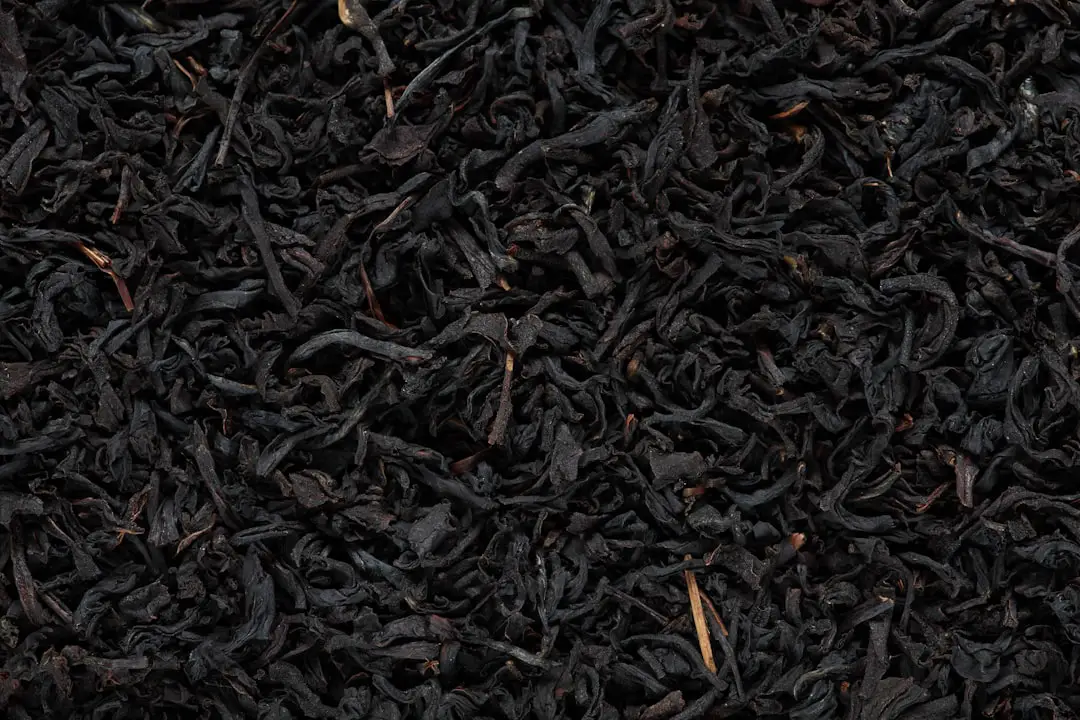
In this deep dive into the world of tea cultivation, we’ve explored the ideal climate for growing tea, the intricacies of the tea plant, the harvesting and processing techniques, and how climate change and sustainability are shaping the future of tea production.
To summarize:
-
Positives:
- Tea thrives in tropical and subtropical climates, with the right balance of temperature, rainfall, and soil conditions leading to high-quality flavors.
- The art of blending allows for a diverse range of flavors, ensuring there’s a tea for every palate.
- Innovations in tea growing and processing are enhancing quality and sustainability.
-
Negatives:
- Climate change poses significant challenges, affecting yields and quality.
- The labor-intensive nature of tea harvesting can lead to higher costs and quality inconsistencies when mechanization is involved.
Final Recommendation: If you’re considering venturing into tea cultivation or simply want to appreciate the nuances of your favorite brew, understanding the factors that affect tea growth is essential. Whether you’re a budding grower or a tea enthusiast, knowledge is your best companion on this aromatic journey! ☕✨
Recommended Links: Dive Deeper into the World of Tea 📚
-
👉 Shop Tea Growing Supplies on:
- Amazon: Tea Cultivation Essentials
- Walmart: Gardening Tools for Tea
- Etsy: Handcrafted Tea Accessories
-
Books on Tea Cultivation:
FAQ: Your Tea Questions Answered! ❓
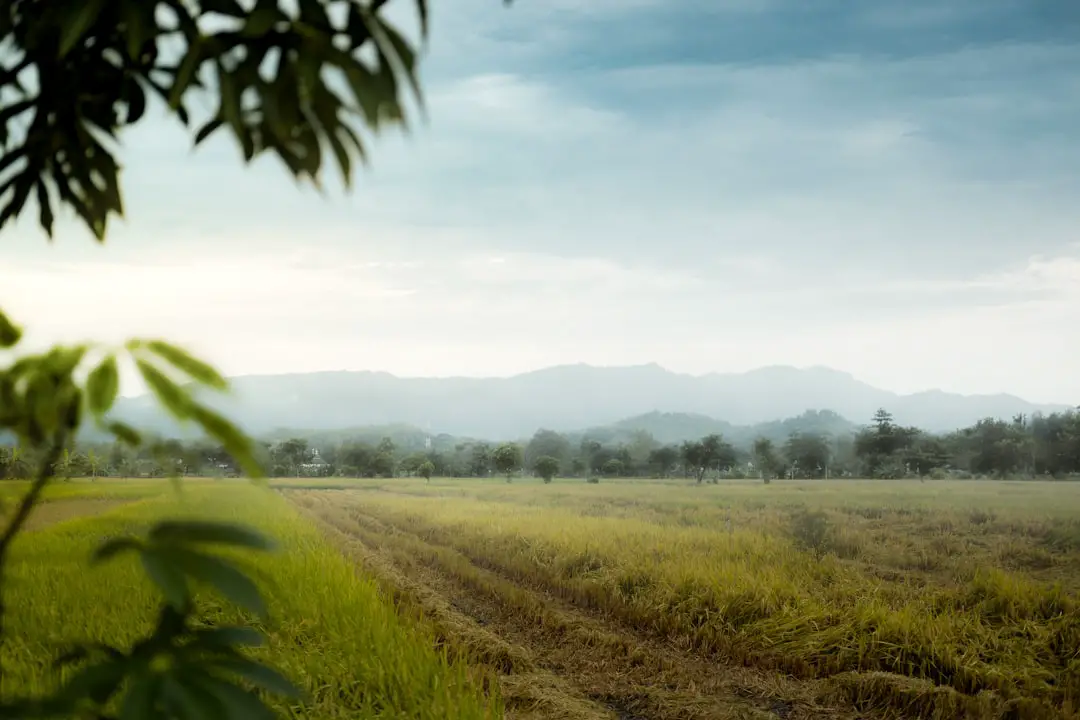
What type of climate does tea grow best in?
Tea grows best in tropical and subtropical climates. The ideal temperature range is between 10°C and 30°C (50°F and 86°F), with ample rainfall (at least 100 cm annually) and well-drained, slightly acidic soil.
Read more about “Growing Teas: 15 Essential Tips for Success in 2024! 🌱”
Where does the tea plant grow best?
The tea plant, Camellia sinensis, thrives in regions such as China, India, Sri Lanka, and Kenya. These areas offer the perfect combination of altitude, climate, and soil conditions that contribute to the unique flavors of their teas.
What are the best conditions for tea to grow?
The best conditions for tea to grow include:
- Temperature: 10°C to 30°C (50°F to 86°F)
- Rainfall: Minimum of 100 cm (40 inches) per year
- Soil: Well-drained, light, acidic soil (pH 4.5-6.5)
- Sunlight: Partial shade, especially during peak sunlight hours
Read more about “Can I Grow My Own Tea Plants? 10 Essential Tips for Success in 2024! 🌱”
Can you grow tea in the US?
Yes, you can grow tea in the US! Regions like South Carolina, California, and parts of the Pacific Northwest offer suitable climates for tea cultivation. However, growers need to ensure they replicate the necessary conditions, including temperature, humidity, and soil type.
Read more about “Can Tea Plants Be Grown Indoors? 10 Essential Tips for Success in 2024! 🌱”
What are the common pests and diseases affecting tea plants?
Common pests affecting tea plants include tea mosquitoes, leafhoppers, and aphids. Diseases like tea blight and root rot can also pose significant threats. Regular monitoring and integrated pest management strategies can help protect tea crops.
How long does it take for tea plants to mature?
Tea plants typically take 3 to 7 years to mature before they can be harvested for the first time. The exact time depends on the variety and growing conditions.
Reference Links: Sources for Your Tea Knowledge 📖
With a newfound appreciation for the climate that nurtures your favorite brew, we hope you’re inspired to explore the world of tea, whether it’s from your garden or your favorite teahouse! Cheers to your next cup! 🍵✨
